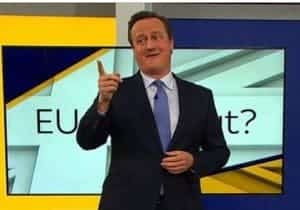Great science presentations: TED Talk case study
Great science presentations are something of a rarity. As an academic scientist and a media and presentation trainer I am caught between two worlds. I know science has to be credible and sourced and that detail can be necessary but I have also sat through way too many fascinating subjects made dull by a bad presentation. So here are some tips for science presentations to non-specialist audiences.
Great science presentations: a great source of best practice
To help illustrate what works, we’ve found a recent TED Talk that is based on real science but has been ‘moulded’ to fit the TED Talk formula. If you don’t know TED Talks then you are in for a treat. It is an impressive library of 13-15 minute presentations with the tag line ‘Ideas worth spreading’. For those of us who often have to present to audiences of varying levels of scientific knowledge TED Talks provide a huge resource that illustrates best practice.
Great science presentations: case study
The talk I have picked to illustrate my tips for science presentations is this one by researcher Kang Lee. It’s called ‘Can you really tell if a kid is lying?’ – which is always going to pull in a bigger audience than a title like “Novel applications of transdermal optical imaging” – which is what many academics would have been tempted to title this talk. Watch it here and then see if you agree with me about what works.
- Lee starts with a personal story. Professional communicators are often reluctant to talk too much about themselves, but a short personal anecdote will engage your audience from the outset.
- He speaks at a good pace. Many people rush their presentations. This may be to do with nerves but it may also be a fear of being boring. Lee has a strong accent which can be an obstacle to comprehension, but his careful pacing ensures the audience has time to process what he is saying.
- The slides are very simple – little data and picture led. This is not always possible in scientific talks and you will likely need to share some detailed data but if you mix this with some pictures and anecdotes it makes your talk more engaging. When Lee does use data it is very simply presented with minimum information on the slide. Again most scientific presentations need more, and in particular need ‘sourcing’ but it is good to keep it as simple as possible.
- Lee has kept his own appearance simple so there is nothing to distract from his presentation.
- Another professional presenters’ trick is to ensure the data is revealed to follow the narrative, rather than all arriving at once and then being dissected by the speaker.
- Lee asks his audience questions but not ones that expose or challenge. Asking a question that you know the answer to and the audience has little chance of getting correct is not a good way to build empathy. But asking for a ‘show of hands’ to gauge life experience is a good way to keep the audience interested.
- A bit of humour helps keep people engaged. Humour is difficult especially when addressing multicultural audiences. Lee uses the well known fairy tale (or Disney Film) Pinocchio and his humour is gentle and unchallenging.
Great science presentations: make it relevant
- Lee also works hard to make ‘transdermal optical imaging’ relevant to the audience. He says, for example, they might in the future use it when they Skype their parents to check if they are being truthful about their health, or when they want to reveal that a politician is lying. Making science relevant is good but I personally found some of Lee’s examples a bit ‘Big Brother’ and unsettling and would have chosen different ones myself.
- A trick he didn’t use but could have done, was to tap into a more sci-fi reference. Transdermal optical imaging is very much like the Voight-Kampff Test used in the movie “Bladerunner”. This would have been another way to make the subject accessible to a general audience.
- Lee in several places makes use of the ‘power of three’. This is a technique whose effectiveness was noted by Aristotle in his work Rhetoric written in the fourth century BC.
Great science presentations: keep it short
- Finally, Lee doesn’t go on too long. At 13 minutes 30 seconds, his presentation is actually considerably shorter than allowed by the TED talk format, which demands that presentations be no longer than 18 minutes – “long enough to be serious and short enough to hold people’s attention”. While you may well be allotted a longer time-slot, remember that people rarely complain that a presentation was too short – especially if previous speakers have over-run.
At the Media Coach we help people make their presentations and interviews more entertaining and interesting by using these ‘tips’ and many others. But the key take-away is: just because a subject is technical doesn’t mean it has to be dull.




















